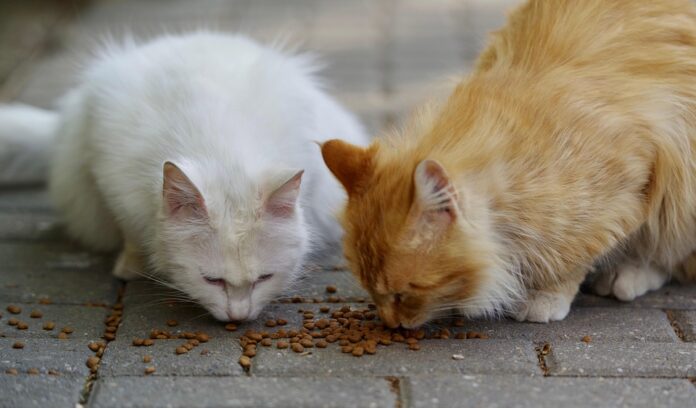Sourcing Ingredients for Cat Food Production
Sourcing Meat and Protein Sources
Cat food production typically starts with sourcing high-quality meat and protein sources. The main ingredients in cat food are typically animal-based proteins, such as chicken, fish, turkey, and beef. These protein sources are essential for meeting a cat’s nutritional needs. Companies often work with suppliers to ensure that the meat and protein sources meet strict quality standards and are free from contaminants.
Adding Vitamins and Minerals
In addition to meat and protein sources, cat food manufacturers also source vitamins and minerals to ensure that the final product meets all of a cat’s nutritional requirements. These vitamins and minerals are carefully measured and added to the recipe to create a balanced and complete diet for cats. Suppliers of these ingredients must adhere to strict quality control measures to ensure the safety and effectiveness of the final product.
Manufacturing Process of Cat Food
Grinding and Mixing Ingredients
Once the ingredients are sourced, they go through a series of processing steps to create the final cat food product. The ingredients are typically ground up and mixed together to create a consistent texture and flavor profile. This step is crucial for ensuring that the cat food is palatable and easy for cats to eat.
Cooking and Forming
After the ingredients are mixed, they are cooked at high temperatures to ensure that they are safe for consumption. The mixture is then formed into the desired shape, whether it be kibble, wet food, or treats. This step requires precision and attention to detail to ensure that the final product meets all quality standards.
Adding Flavor and Preservatives
To enhance the taste of the cat food and prolong its shelf life, manufacturers often add flavorings and preservatives. These ingredients are carefully selected to ensure that they do not compromise the nutritional integrity of the product. Flavorings can include natural ingredients like chicken broth or fish oil, while preservatives help to prevent spoilage and maintain freshness.
Packaging and Distribution of Cat Food
Packaging Process
Once the cat food is manufactured, it is packaged into bags, cans, or pouches for retail sale. Packaging plays a crucial role in preserving the freshness of the product and protecting it from external contaminants. Manufacturers often invest in high-quality packaging materials to ensure that the cat food remains safe and appetizing for consumers.
Distribution Channels
Cat food manufacturers typically distribute their products through a variety of channels, including supermarkets, pet stores, and online retailers. They work with distributors and retailers to ensure that their products are widely available to consumers. Distribution logistics play a key role in getting cat food products to retail shelves in a timely and cost-effective manner.
Industry Insights and Trends
Market Size and Growth
The global cat food market is a multi-billion-dollar industry that continues to grow each year. With the increasing humanization of pets and a greater focus on pet health and wellness, consumers are willing to spend more on high-quality cat food products. This trend is driving innovation and competition in the market, with manufacturers constantly striving to develop new and improved products to meet consumer demand.
Sustainability and Ingredient Sourcing
Sustainability and ingredient sourcing have become major focuses for cat food manufacturers in recent years. Consumers are increasingly concerned about the environmental impact of pet food production and are looking for products that are sourced ethically and sustainably. Many companies are now investing in sustainable practices, such as using organic ingredients and reducing their carbon footprint, to appeal to environmentally conscious consumers.
Overall, the process of making cat food involves sourcing high-quality ingredients, manufacturing the product with precision and care, and packaging it for retail distribution. As the pet food industry continues to evolve, manufacturers are adapting to changing consumer preferences and trends to meet the needs of pet owners and their beloved feline companions.




